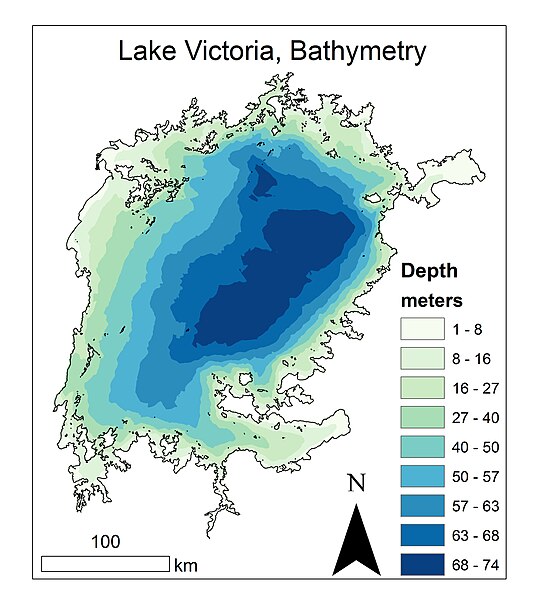Fisheries Survey of Lake Victoria
Lake Victoria supports Africa's largest inland fishery, with the majority of present catch being the invasive Nile perch, introduced to the Lake in the 1950s. Prior to the introduction of Nile perch as well as Nile tilapia, the fish community was very different and consisted mainly of 'Ngege' and Victoria tilapia as well as vast numbers of Haplochromis species. Fish communities in the first half of the 20th century are known primarily from a unique fisheries survey conducted in 1927-1928 by the Colonial Office.
The SS Kavirondo and a canoe at Port Victoria during the 1927 fisheries survey of Lake Victoria
Filleted Ngege Oreochromis esculentus being brought ashore in 1927
Lake Victoria is one of the African Great Lakes. With a surface area of approximately 59,947 km2 (23,146 sq mi), Lake Victoria is Africa's largest lake by area, the world's largest tropical lake, and the world's second-largest fresh water lake by surface area after Lake Superior in North America. In terms of volume, Lake Victoria is the world's ninth-largest continental lake, containing about 2,424 km3 (1.965×109 acre⋅ft) of water. Lake Victoria occupies a shallow depression in Africa. The lake has an average depth of 40 m (130 ft) and a maximum depth of 80–81 m (262–266 ft). Its catchment area covers 169,858 km2 (65,583 sq mi). The lake has a shoreline of 7,142 km (4,438 mi) when digitized at the 1:25,000 level, with islands constituting 3.7% of this length.
Lake Victoria partially obscured by clouds taken on the International Space Station
Victoria Nyanza. The black line indicates Stanley's route.
Lake Victoria bathymetric model
Unlike many other Lake Victoria cichlids, Haplochromis nyererei remains common. Compared to several other cichlids, its eyes are particularly sensitive to light, especially red, which is less affected by the decrease in water clarity caused by eutrophication than short wavelength colors






